Here we identify the most important retail tech trends for 2016 and share our thinking on what to watch for and why. These include virtual reality, robots, mobile payments and 3D printing. Here we summarize the top 16 trends, for our full report click here.
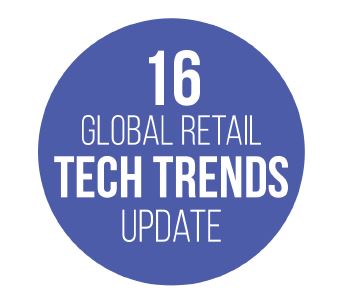
1. VIRTUAL REALITY: RETAIL REALITY
Virtual reality (VR) technologies will move further into the mainstream, boosted by consumer shipments of the Oculus Rift beginning in March. VR will be used selectively to enhance the in-store experience and help shoppers choose among customization options. Retailers and brands that sell goods and services with high average sale prices will likely lead the charge in VR adoption.
2. PARTNERSHIPS: LINKS ACROSS THE IOT
As the Internet of Things (IoT) expands, we will see more partnerships between tech firms and brands: Intel has already partnered with New Balance and IBM with Under Armour to develop IoT products or services. Furthermore, almost all of today’s modern marketing techniques are built on the new gold currency of our era: data. Merging customer data with prospecting data, so that brands and retailers can reach people with more personal marketing, will result in a significant wave of new partnerships.
3. ROBOTS: HELPERS AND COLLEAGUES
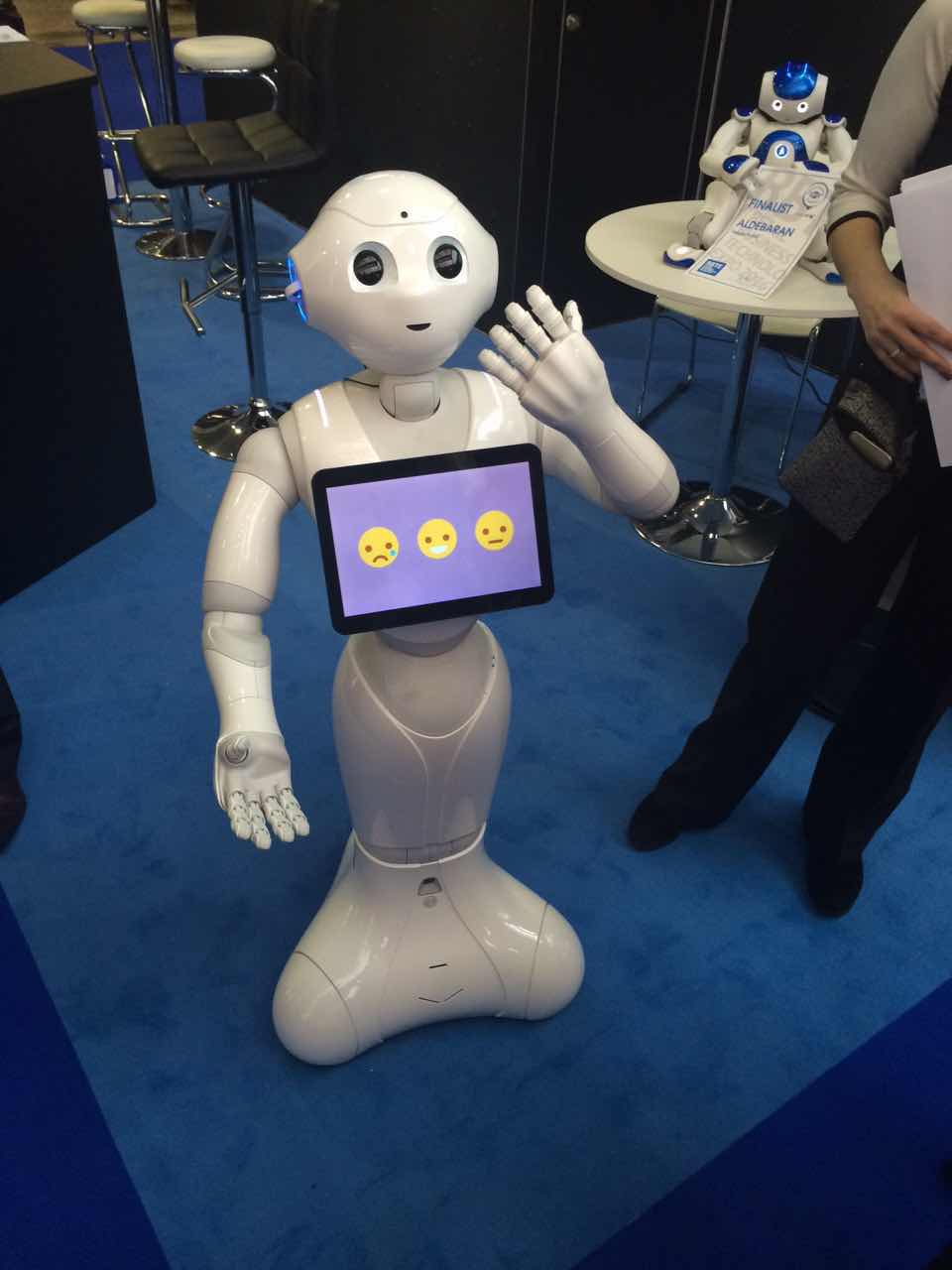
As retail and other industries face increasing pressure to boost efficiency and reduce costs, robots will be used in more warehouses and factories, on more sales floors and in more homes—and humans and robots will increasingly work side by side. Following Amazon’s success with robots in its warehouses, several startups have developed robots and automation systems for use in warehouses, particularly in e-commerce fulfillment houses.
4. WEARABLES: ALL ABOUT WELLNESS
 Fitbits, smartwatches and other wearables are leading the way in the wellness market, and sales of these products are projected to grow from $20 billion in 2015 to almost $70 billion in 2025. In 2016, most wearables will focus on wellness, specifically on fitness, nutrition and sleep, with the more popular products providing a one-stop, integrated solution for monitoring many aspects of personal health.
Fitbits, smartwatches and other wearables are leading the way in the wellness market, and sales of these products are projected to grow from $20 billion in 2015 to almost $70 billion in 2025. In 2016, most wearables will focus on wellness, specifically on fitness, nutrition and sleep, with the more popular products providing a one-stop, integrated solution for monitoring many aspects of personal health.
5. DRONES: FROM TOYS TO TOOLS
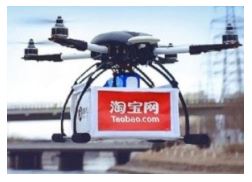 Drones are gradually evolving from being just technical curiosities and toys into being commercially useful. Drone technology is still in its infancy, though, and companies continue to find new applications for it.This year, there will be increased focus on the safety of consumer drones. Major drone makers are likely to add geolocation functionality to their products in order to keep them out of sensitive areas and mitigate regulators’ concerns about their safe usage.
Drones are gradually evolving from being just technical curiosities and toys into being commercially useful. Drone technology is still in its infancy, though, and companies continue to find new applications for it.This year, there will be increased focus on the safety of consumer drones. Major drone makers are likely to add geolocation functionality to their products in order to keep them out of sensitive areas and mitigate regulators’ concerns about their safe usage.
6. CONNECTED HOMES: THE COMPETITION HEATS UP
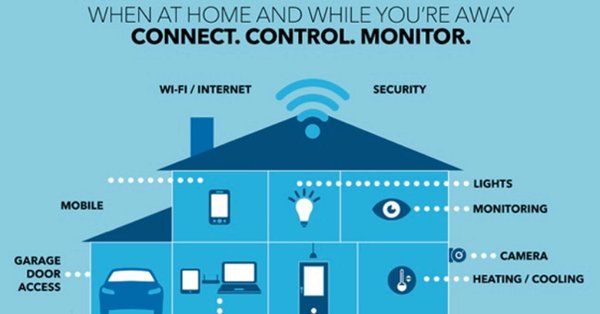 As more retail and technology companies join the race to help homeowners gain better control over their home appliances and devices, we expect three key trends to take shape this year. First, the market for hubs and platforms may get more competitive as the most popular hubs allow a wider set of devices to work together. Second, the home security segment will boost the connected-home market. Finally, connected homes and connected cars will converge, with cars functioning as an extension of the smart devices in the user’s home.
As more retail and technology companies join the race to help homeowners gain better control over their home appliances and devices, we expect three key trends to take shape this year. First, the market for hubs and platforms may get more competitive as the most popular hubs allow a wider set of devices to work together. Second, the home security segment will boost the connected-home market. Finally, connected homes and connected cars will converge, with cars functioning as an extension of the smart devices in the user’s home.
7. STREAMING: TIME TO CUT THE CORD
The traditional broadcast TV model is increasingly being replaced by the cloud. There is no reason to think that viewers will stick with cable, especially in the US, where cable fees continue to climb. The major US providers, AT&T, Comcast, Dish and Time Warner Cable, are all planning to increase prices in 2016. With subscription fees that are a fraction of the cost of cable TV service in the US, streaming services are a more attractive offering for many consumers, although many people still use cable services, so having a good TV Installation service at hand could always be useful for this.
8. CYBERSECURITY: KEEPING THE BAD GUYS OUT

The cybersecurity market will continue to grow as the number of ways criminals can invade digital systems multiplies in conjunction with increased use of mobile devices and mobile payments. With 50 billion devices expected to be connected to the IoT by 2020, hackers will have an additional 50 billion (or more) access points for their criminal activities. The coverage of cybersecurity will have to be expanded to secure the rapidly growing number of connected devices and interfaces.
9. AUTONOMOUS VEHICLES: THE JETSONS ARE FINALLY COMING
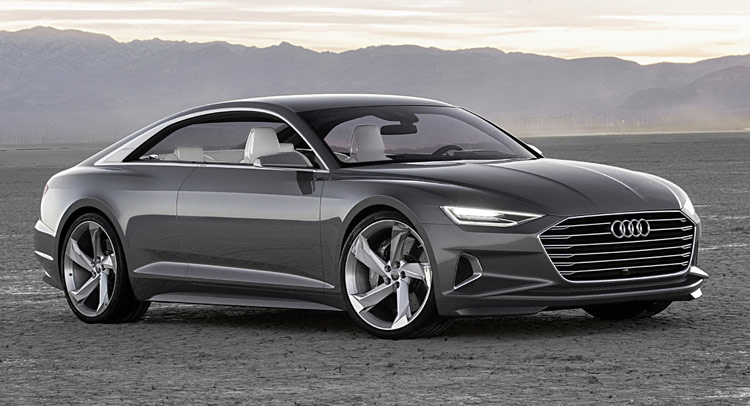 The driverless car market will become more crowded as companies work to perfect driverless cars that can conserve energy, reduce accidents, and transport disabled and elderly passengers. Consumer electronics, software and traditional auto companies will need to work closely together in order to produce and develop autonomous vehicles, so a significant degree of consolidation is expected to take place in the industry.
The driverless car market will become more crowded as companies work to perfect driverless cars that can conserve energy, reduce accidents, and transport disabled and elderly passengers. Consumer electronics, software and traditional auto companies will need to work closely together in order to produce and develop autonomous vehicles, so a significant degree of consolidation is expected to take place in the industry.
10. MOBILE PAYMENTS: CASH IS DEAD
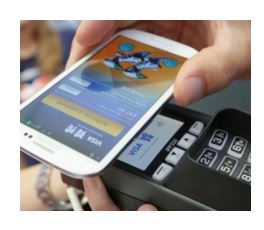 North American consumers will increase their use of mobile payment systems such as Apple Pay, following the path already taken by shoppers in Europe and Asia. Mobile wallets will become standard on newer smartphones, and more retailers will accept proximity payments from Apple Pay, Android Pay, Samsung Pay and other systems. There will also be significant consolidation among the hundreds of mobile wallet providers currently in the market.
North American consumers will increase their use of mobile payment systems such as Apple Pay, following the path already taken by shoppers in Europe and Asia. Mobile wallets will become standard on newer smartphones, and more retailers will accept proximity payments from Apple Pay, Android Pay, Samsung Pay and other systems. There will also be significant consolidation among the hundreds of mobile wallet providers currently in the market.
11. SMART CITIES: AIDING URBAN GROWTH
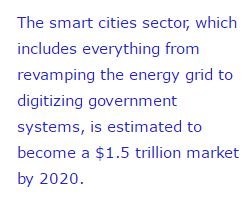 More cities will become “smart cities,” using information and communication technologies to enhance the quality, performance and interactivity of urban services; to reduce costs and resource usage; and to improve contact between citizens and the government. Growing awareness and adoption of smart city technologies will spur countries to create policies that prioritize funding for these technologies and document technical and business guidelines.
More cities will become “smart cities,” using information and communication technologies to enhance the quality, performance and interactivity of urban services; to reduce costs and resource usage; and to improve contact between citizens and the government. Growing awareness and adoption of smart city technologies will spur countries to create policies that prioritize funding for these technologies and document technical and business guidelines.
12. 3D PRINTING: FOR INDUSTRY, CRAFTS AND…DINNER?
 A third industrial revolution will take root as 3D technology allows small retailers and individual consumers to design and produce goods. Given consumers’ appetite for ever-faster shipping, it is likely that some will realize they can get the speediest delivery by manufacturing items themselves at home with a 3D printer.
A third industrial revolution will take root as 3D technology allows small retailers and individual consumers to design and produce goods. Given consumers’ appetite for ever-faster shipping, it is likely that some will realize they can get the speediest delivery by manufacturing items themselves at home with a 3D printer.
13. AI PERSONAL ASSISTANTS: “MAY I HELP YOU?”
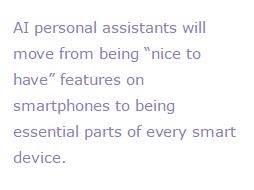 Artificial intelligence (AI) personal assistants are becoming an integral part of the IoT, which offers exciting new capabilities to interconnect intelligent systems. With additional breakthroughs likely in the next few years, AI personal assistants will move from being bonus features on smartphones to being an essential part of every smart device. This will revolutionize not only how the devices are used, but also have great implications for retail and other sectors.
Artificial intelligence (AI) personal assistants are becoming an integral part of the IoT, which offers exciting new capabilities to interconnect intelligent systems. With additional breakthroughs likely in the next few years, AI personal assistants will move from being bonus features on smartphones to being an essential part of every smart device. This will revolutionize not only how the devices are used, but also have great implications for retail and other sectors.
14. FACIAL RECOGNITION: SECURITY AND MORE
 Facial recognition technology has moved beyond the commercial sphere into the consumer arena, and we expect its uses to multiply. In the future, accurate and secure facial recognition technology will likely completely eliminate the need for physical keys, passwords and credit cards. In addition, the technology has a large number of potential applications in health, wellness and beauty, from helping to diagnose certain ailments to determining the optimal shade, thickness and application of makeup.
Facial recognition technology has moved beyond the commercial sphere into the consumer arena, and we expect its uses to multiply. In the future, accurate and secure facial recognition technology will likely completely eliminate the need for physical keys, passwords and credit cards. In addition, the technology has a large number of potential applications in health, wellness and beauty, from helping to diagnose certain ailments to determining the optimal shade, thickness and application of makeup.
15. VOICE RECOGNITION: MOVE OVER, SIRI
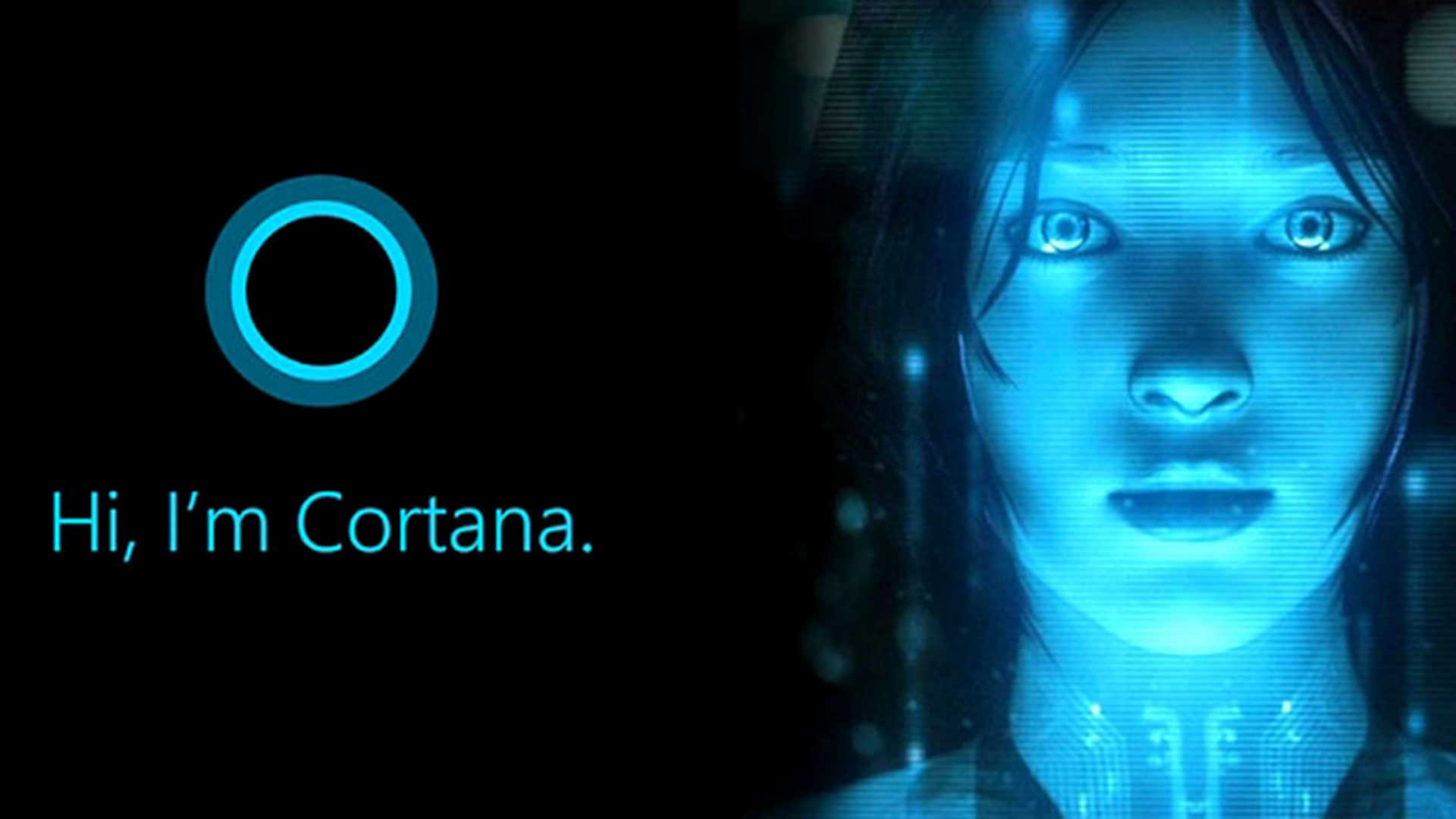 Voice and speech recognition technology will eventually be used for everything from simple dictation to the automatic transcription of conference calls to complete voice control of all household appliances. Translation software is an area that still needs improvement, though, as the difficulty of understanding the nuances present in every human language makes developing superior translation software extremely challenging.
Voice and speech recognition technology will eventually be used for everything from simple dictation to the automatic transcription of conference calls to complete voice control of all household appliances. Translation software is an area that still needs improvement, though, as the difficulty of understanding the nuances present in every human language makes developing superior translation software extremely challenging.
16. POINT OF SALE: THE END OF THE CHECKOUT LINE?
Retailers are getting better at managing checkouts with shorter lines and quicker checkout options. In the near future, checkouts are likely to be distributed through more areas of the store and more staff will be able to scan and bill items through tablets and other hand-held devices. The development of smart shopping carts will also enable quicker purchasing, while self-scan via smartphones is likely to become commonplace.
For more on each trend, read our full report here.
Connect with us on Social Media:
@DebWeinswig
@FungRetailTech
Facebook
LinkedIn
Subscribe to our YouTube channel
Pinterest
Instagram
